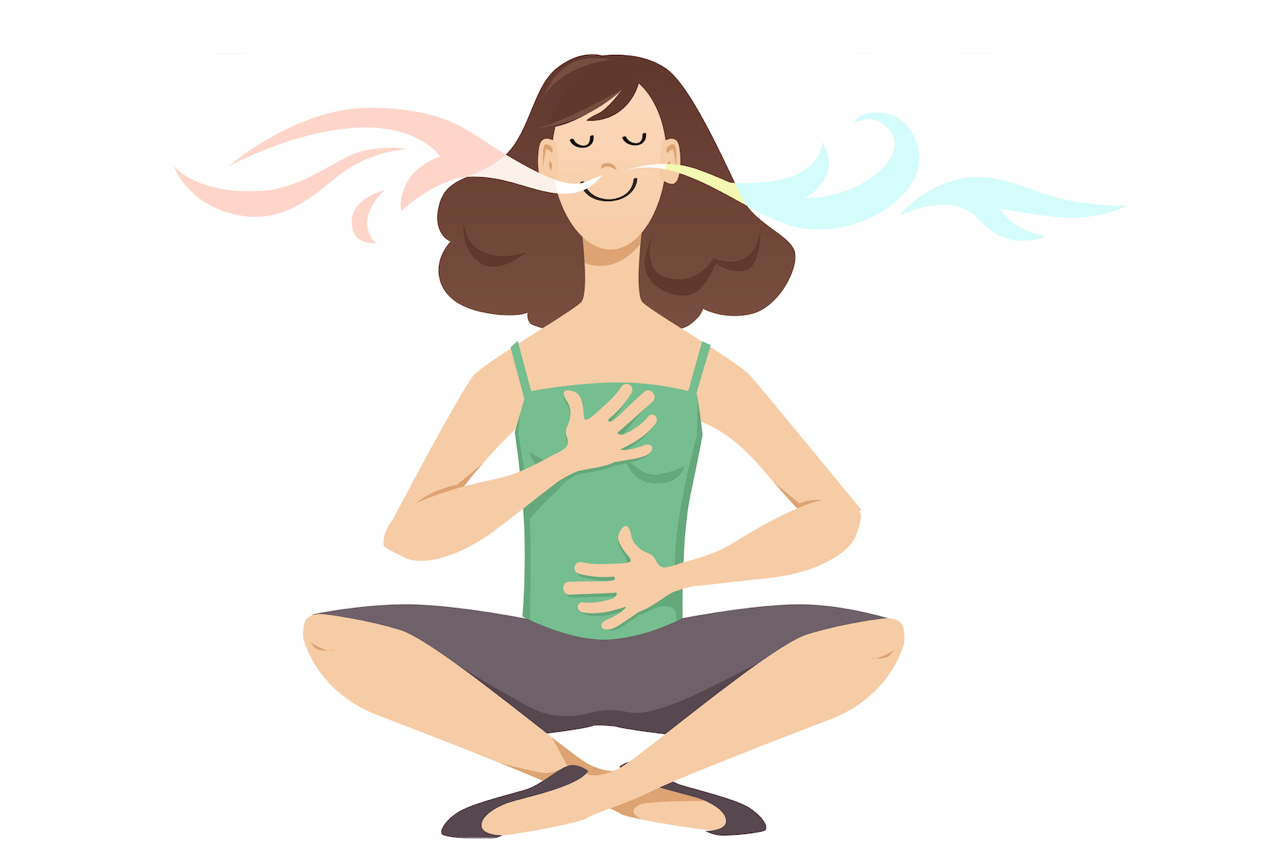Breathing is an automatic process driven by the part of your brain that controls other life-sustaining functions like your heartbeat and sleeping patterns.
Learning to breathe correctly can benefit your immune system by optimising oxygenation; the addition of oxygen in your body. It can also help to lower your blood pressure, reduce stress and balance your nervous system.
By paying careful attention to your breathing and breathing at a different pace, it is possible to engage different parts of the brain.
Controlled breathing
A 2017 study found that controlling your breathing calms your brain. Researchers stumbled on the neural circuit in the brainstem that appears to play the key role in the breathing-brain control connection.
This circuit is part of the brain’s “breathing pacemaker” as it can be adjusted by altering breathing rhythm. Slow, controlled breathing decreases activity in the circuit. Fast, erratic breathing increases activity, which, in turn, spurs on extreme emotions.
Controlled breathing exercises like the 4-7-8 method can help regulate the circuit. The numbers in the name 4-7-8 refer to the time taken breathing in (4 counts), holding your breath (7 counts) and exhaling (8 counts). Breathing techniques like these help you tap into your body’s natural relaxation response to help reduce stress and enhance wellness.
Take a deep breath
Thanks to Dr Andrew Weil, a Harvard-trained medical doctor, who developed the 4-7-8 breathing pattern; the pattern can give your organs and tissues a much-needed oxygen boost. Do it often enough, and it’s possible that this technique could also start to help your sleeping patterns too.
Breathing and relaxation techniques help you balance and regulate the fight-or-flight response you may feel when you’re stressed.
4-7-8 breathing
To get started with 4-7-8 breathing, find a place to sit or lie down comfortably. It’s important to hold a good posture. If you’re using this technique to fall asleep, it’s best you lie down.
Rest the tip of your tongue against the roof of your mouth, right behind your top front teeth, and keep it there throughout the session.
Do the following steps in the cycle of one breath:
- Start by letting your lips part. Make a whooshing sound, exhaling completely through your mouth.
- Next, close your lips, and inhale silently through your nose as you count to four in your head.
- Hold your breath for seven seconds.
- Make another whooshing exhale from your mouth for eight seconds.
When you inhale again, you start a new cycle. Repeat this pattern for four full breaths. The held breath for seven seconds is the most important part of the exercise.
It’s also recommended that you only do 4-7-8 breathing for four breaths when you’re first starting out. Gradually work your way up to eight full breaths.
Other techniques that can help you dial down your stress responses:
- Progressive muscle relaxation
- Mindfulness meditation
- Yoga, tai chi, and Qi Gong
- Repetitive prayer
- Guided imagery
References:
- https://www.healthline.com/health/breathing-exercises-for-sleep#1.-4-7-8-breathing-technique-
- https://www.ncbi.nlm.nih.gov/pmc/articles/PMC5709795/
- http://science.sciencemag.org/content/355/6332/1411/tab-figures-data
- https://qz.com/quartzy/1132986/neuroscientists-have-identified-how-exactly-a-deep-breath-changes-your-mind/
- https://www.health.harvard.edu/mind-and-mood/relaxation-techniques-breath-control-helps-quell-errant-stress-response

